In 2021, Chris Lawrence explained the work of the visual effects created by Framestore on The King’s Man.
In 2020, Arslan Elver discussed his contributions to Lady and the Tramp. Following this, he continued by working on Thor: Love and Thunder.
How did you get involved on this movie?
Chris Lawrence: I had just finished working on a short of Paddington having tea with Queen Elizabeth and was starting to prep another show. We had a call with John to talk through how we had made Christopher Robin. I remember being impressed during the call at how well prepared he was and how much detail about VFX he understood – perhaps he’s an Art of VFX reader?! He pitched his vision for the movie and the characters and the influences behind it and after I thought “wow, that’s going to be great!’’.
How was the collaboration with Director John Krasinski?
Arslan Elver: Amazing! He is one of the most collaborative directors I’ve ever worked with, and his enthusiasm and energy are contagious! He was open to the creative ideas we proposed. From character designs to crazy camera movements in previs, to paying homage to Esther Williams, to suggesting cut changes to support our beloved IFs thought processes for better readability. He was on board all the time. For example, I suggested to John to add a constant squint to Lewis’s eyes. I was inspired by a picture of the late Louis Gossett Jr. and thought it would give more depth to the character. Lewis’ constant squint became a defining trait of the character. There were lots of similar moments where a combination of hard work and fun helped create these beautiful characters and make something special.
Chris Lawrence: John is an incredible creative, ideas are just flowing out of him the WHOLE time! He also has this completely contagious enthusiasm for our process. This was extremely helpful as he would actively want to get stuck in with us and figure stuff out together. We went through multiple phases of this from the initial idea generation, through the practical/logistical challenges of the shoot and performing with so many different sized and shaped characters, to visualisation during the editing process to flesh out the scenes. It felt like he was very tuned into our needs and dedicated himself to helping our work be the best it could be. Normally this involved a combination of keeping us all honest about the story value of our ideas, along with knowing what only he could know about where he wanted to end up. I think you can only do this as efficiently as John did when you have a very clear vision behind it all, especially when the ideas themselves are all original and being introduced to the world for the first time.
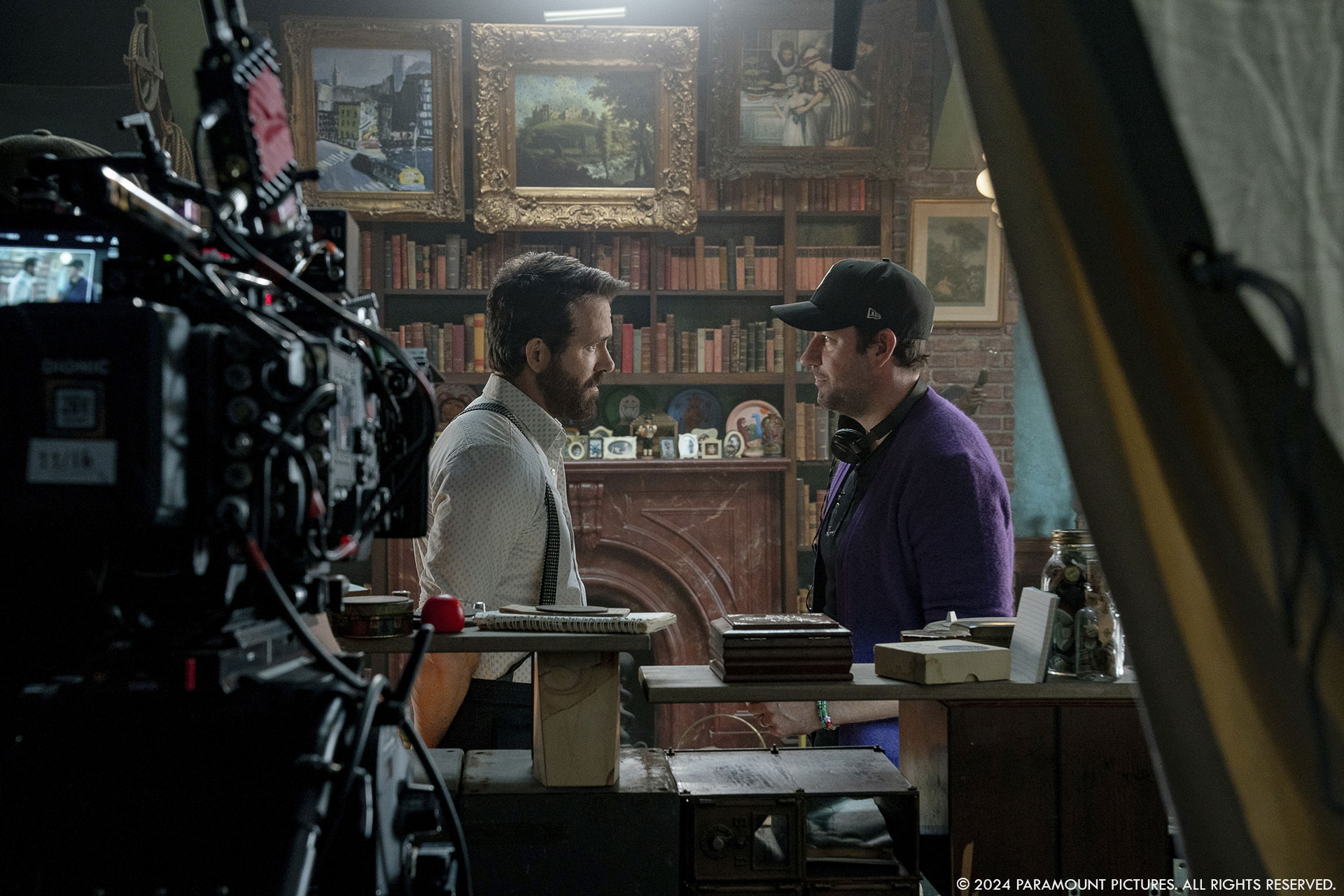
How does his experience with the creatures of A Quiet Place help him on this new show?
Arslan Elver: He really understood the importance of CG characters thanks to his experience working on A Quiet Place. But, for IF, the challenge was even greater due to the characters’ performances and how they interact with the cast.
Chris Lawrence: I wasn’t involved with A Quiet Place but the breadth and scope of this one was significantly different! We had over 40 unique characters make it into the movie, all different scales with different movement languages. One of the things we all agreed on was that in terms of camera and blocking we were going to treat it like the characters were really there. I think on A Quiet Place he had played the monster himself and he definitely undertook to do this with some of the IFs! It worked really well as obviously he knew what he wanted.
Can you describe the creative process behind designing the adorable creatures?
Arslan Elver: We started with 2D sketches, andwere provided with ad some amazing artwork. Translating a 2D drawing to a 3D model that works at every angle is a significant challenge, though, since you want to keep the character appealing and lovable from every conceivable angle. We worked with Owen Jackson and Framestore’s visdev department to generat quickfire iterations, trying different ideas and proportions of the characters – a hugely creative and exciting process when it came to finding new things about the characters. As part of this process we fine-tuned elements like Blue’s facial structure, Cosmo’s jacket and how his eyes would work. Another example was how Bubble would have mini bubbles around her, and how she might burst and reappear. Right after that, we took the characters into the Framestore pipeline and built them so they’d be technically correct for face shapes and rigging. For Blue, we used a new facial rigging system which is more like what you’d find at a feature animation studio – it allowed us to really achieve any shape you wanted. We alsohad a special cage system around his body that allowed animators to shape his silhouette as required.
For Blossom it was quite a challenge to get her face work in 3D. Being a Fleischer-era inspired character meant there were significant challenges when it came to to transfering her into our 3D world. With 2D characters the name of the game is to ‘cheat’ from different angles – 2D animators can draw differently from a three-quarter or side view. When you transfer the design to 3D, though, that simply doesn’t work – this is something I’d learned working on the live-action Tom & Jerry film, which involved the same kind of 2D-to-3D challenges. In this case, the biggest advantage was that we got to set the rules for Blossom. With the help of 2D design we first established our base model. The next stage was making the facial rig work around that base shape, which highlighted potential issues or ‘problem’ angles. From here the process moved to something quite similar to a 2D model sheet.

Chris Lawrence: It was interesting as we tailored our approach to each character. With Blue we had a pretty solid concept to start with so we moved quickly to make an animatable CG character with Framestore’s visual development team. We initially showed him off walking and running through the Framestore lobby. This helped us evolve his silhouette and find key attributes of his performance. With Blossom it was a different design challenge: we had to evoke the feeling of the Fleischer era, with a 3D model that worked well from all angles. We had an initial sketch which John loved, but we brought on 2D animator Gary Dunn to do model sheets to help us translate that into a series of 3D poses. He really did an incredible job, in the end she had an enormous amount of appeal and is one of my favourite characters in the movie. With Lewis we didn’t really have an approved sketch, more an idea. We took a chance and went pretty much straight into a 3D build in Blender, using some of Framestore’s proprietary groom tools in Maya to get his fur the way we wanted. The render that came out had so much attitude John fell in love at first sight and from then on we had to be very careful not to deviate far! We took a similar approach with a lot of the tertiary and crowd IFs – going very quickly into 3D models with Framestore’s visual development team, sometimes without even having a sketch to start with. This worked well and I think the team had a great time pitching their ideas!
What inspired the visual aesthetic for these creatures, and how did you bring them to life through animation?
Arslan Elver: It all started with the original kid who imagined them: each child’s background, the era they grew up in, what inspired them or sparked their imagination. The next big thing – which John was very clear about from the beginning – was that all these characters need to feel like they belong to the same world as their kids,so they have to be truthful in their emotions and needed to feel absolutely genuine. All of this mad for some interesting creative challenges for our animators, since we had to make every single character act naturally while retaining their own unique quirks and idiosyncrasies.
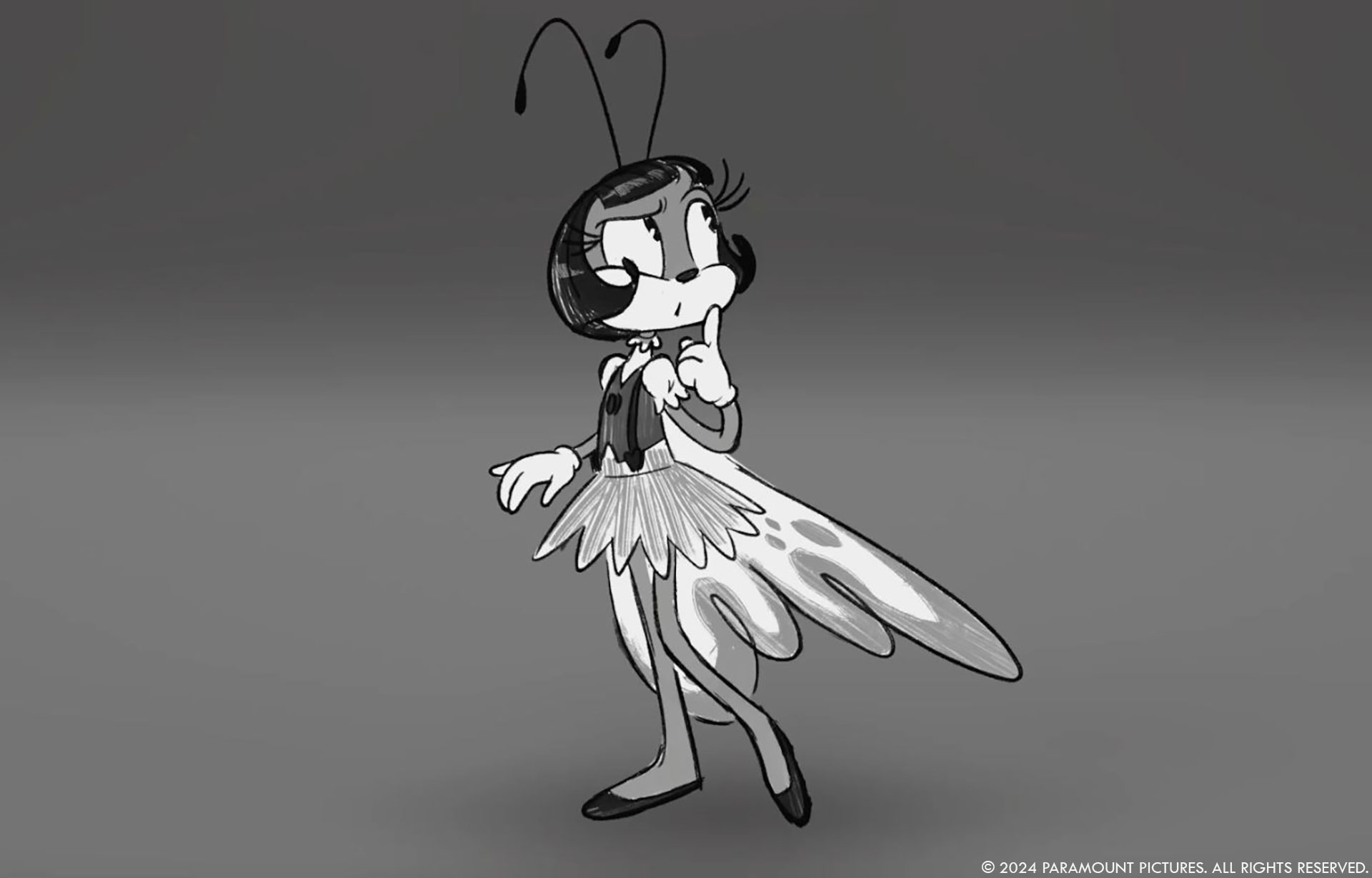
Chris Lawrence: There’s this ‘truth’ running through all the characters that they originate with children’s creativity and imagination. What was nice was that we were able to interpret that across a wide range of eras: Blue’s almost puppet-like quality, Blossom’s early 20th century animation, Uni’s very contemporary plush toy feel. In each case we were careful to make the IFs feel hand crafted. Of course movies like Who Framed Roger Rabbit were hugely inspirational, but we were trying to deliberately sit them in our world rather than feel like a composite.
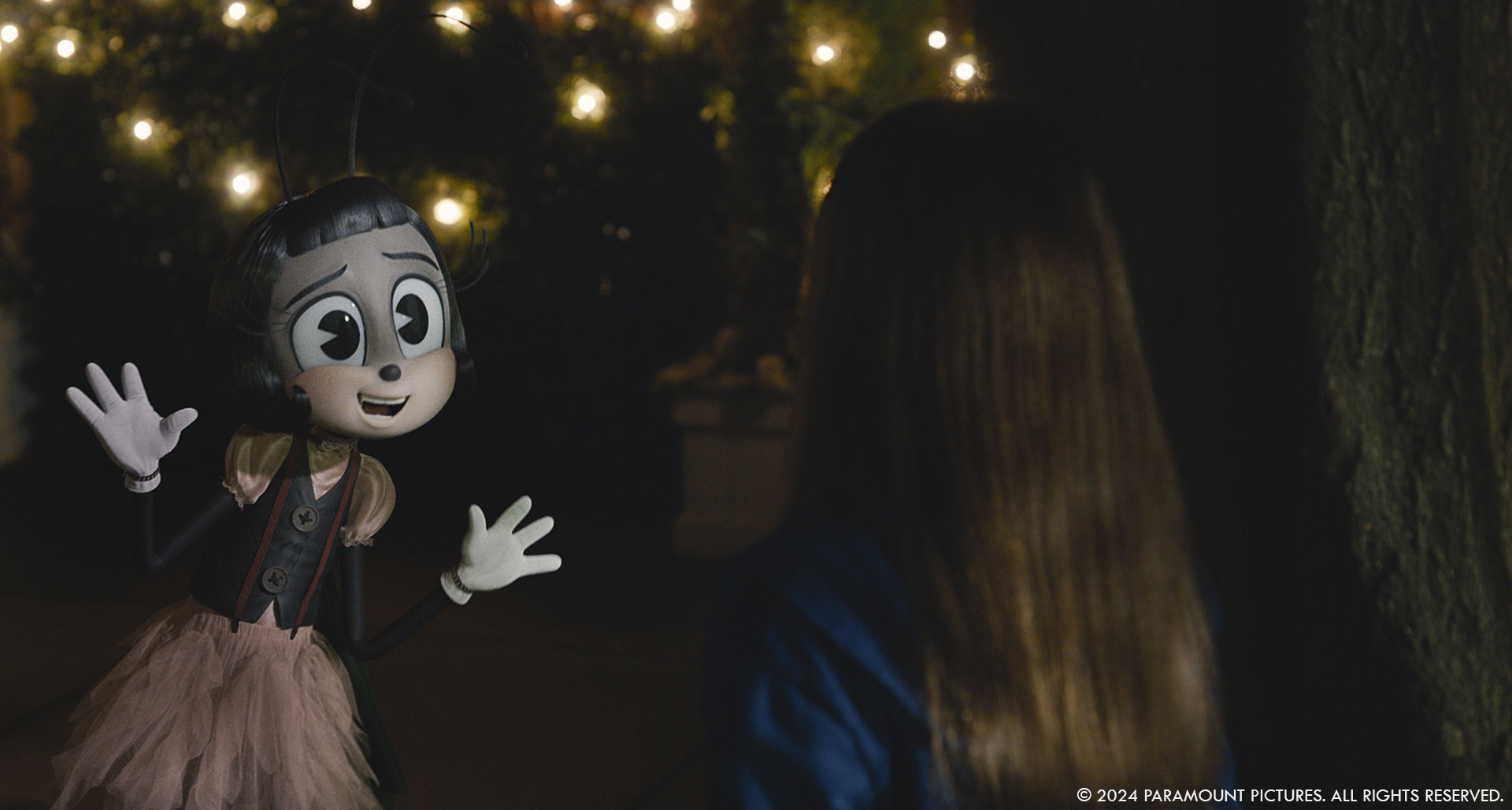
Were there any specific challenges you faced when designing and animating the creatures, and how did you overcome them?
Chris Lawrence: Blue had a number of challenges – one of them was his colour! Purple can be a tricky colour on film – too much cool light and it turns blue, too much warm light and it desaturates or goes magenta. Under normal circumstances it probably would have been fine to have some blue shadow areas in his fur, but John and the producers were very keen that not a single pixel ever appear blue (since it’s a story point that he’s called Blue but coloured purple!). So we had to tread this really fine line in the DI, sometimes with multiple updates of the comps to make sure he was the right colour under the grade Stefan was doing. Another notable thing with Blue was his scale, we had a pretty unwieldy full size lighting proxy that the VFX production/wrangler team did an heroic job of getting on and off set while we were shooting! To work around difficulties we encountered with the full scale puppet, Arslan would often do live visualisation on set, using iphone lidar scans and video assist stills, to make sure the cheats we were employing worked on camera.
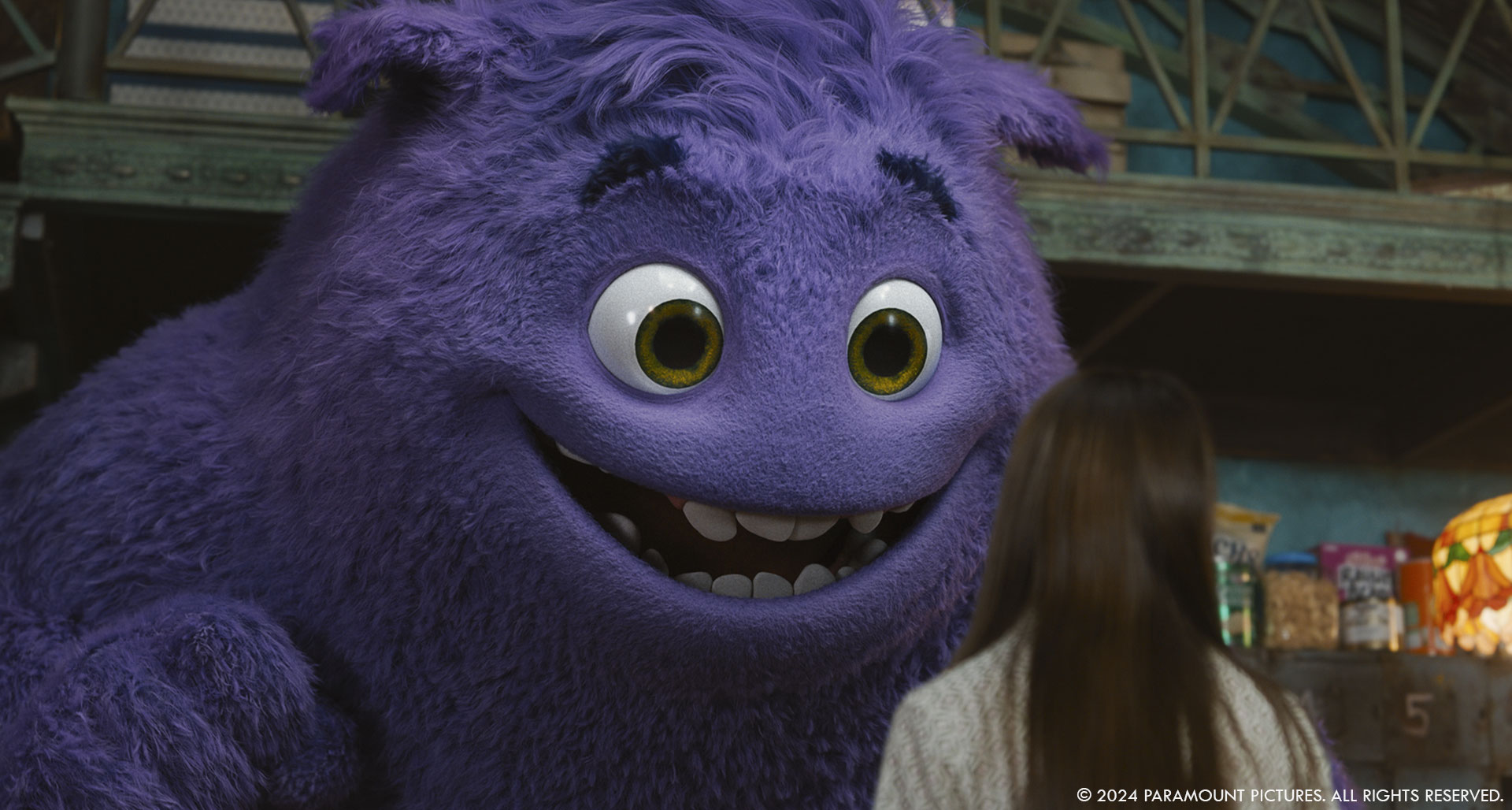
Arslan Elver: Each character had his or her unique challenge to be honest. For Blue, it was his sheer size as he wasn’t able to fit in everywhere easily. Also, his facial structure was a challenge due to its huge eyes and big mouth. We went for more of a feature animation rigging technique, where we combined blendshapes with deformers to create more organic, squishy shapes.
As I’ve mentioned, Blossom’s design was inspired by Betty Boop-era character and with 2D characters you’re able to ‘cheat’; by drawing the character from different angles.Being the boss of our own character meant we set the rules from different angles for her face structure, and ourrig allowed the artists to sculpt the cheek and eyes to make more appealing shapes.
There were also challenges on the performance front: Blossom’s a sassy character, but we didn’t want to make her arrogant. We looked at Fleabag and picked some of Phoebe Waller-Bridge’s idiosyncratic head moves that we could translate to Blossom. Then you have these moments like where she’s giving her big sales pitch to Bea to get her onboard for the matchmaking agency, where there’s a need for her to be heartfelt and genuine while also bickering with Cal (Ryan Reynolds).
For Lewis, it was all about conveying wisdom. We were really inspired by photos of the late Louis Gossett Junior: teh depth of wisdom in his smile, and the characterful wrinkles around his eyes, both of which we applied to Lewis. We wanted his body posture and general performance to reflect age, experience and knowledge but to retain an upbeat sense of character.
Lastly I just want to add something about Cosmo, since he’s such a fan favourite. His “cloak and dagger!” line added a lot of fun, but he was a character where we bent the rules of physics here and there to make him appear and disappear in a few frames in order to make the most of his spy-like character.
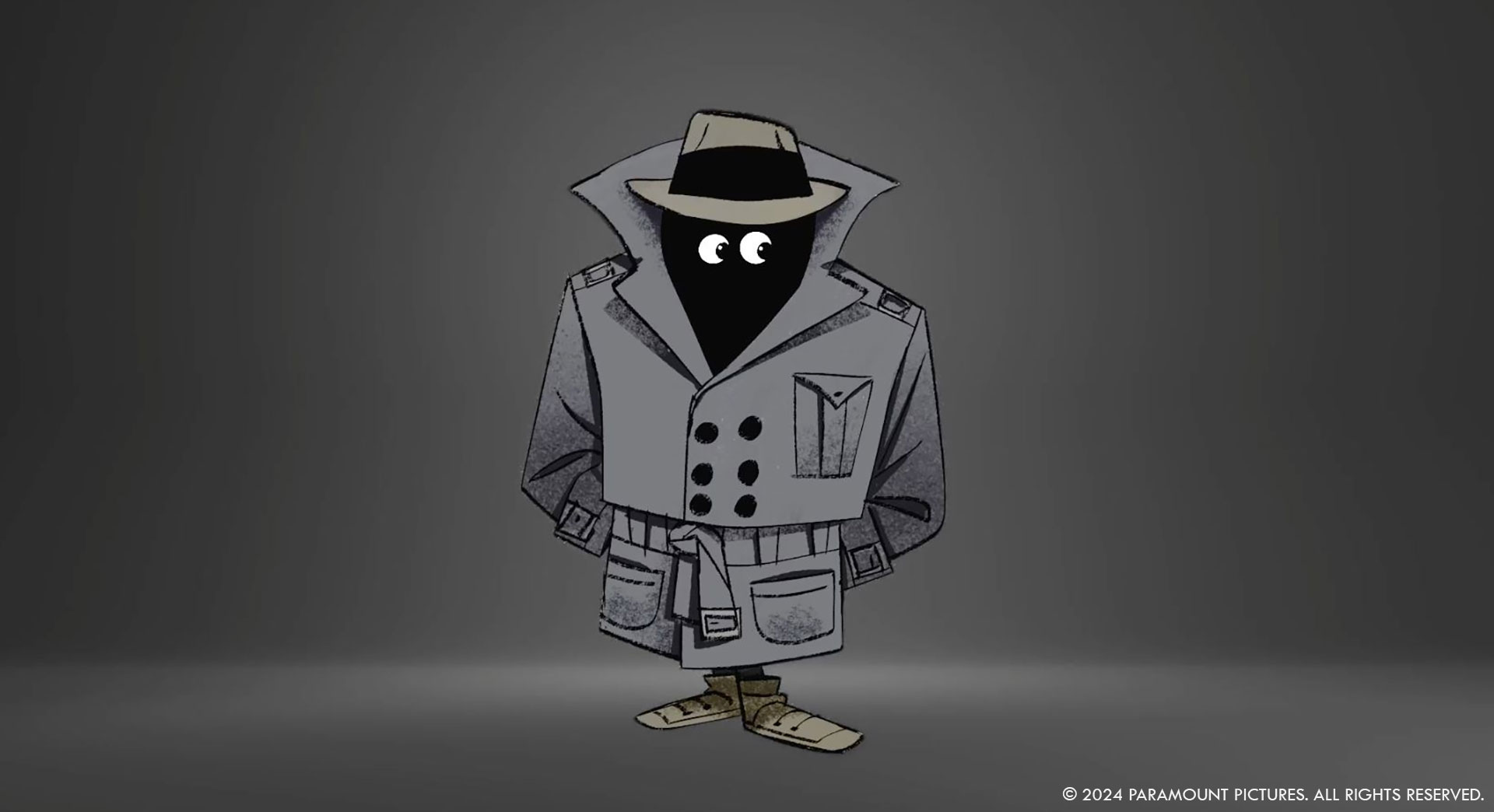
How did you ensure that each creature had its own unique personality and charm in both design and animation?
Chris Lawrence: John was rigorous about contextualising all the characters in the story, when we pitched ideas often the idea behind the character “what kind of kid would imagine them?” – was as important as the character itself. There was a through-line in terms of the craft and creativity of a small girl’s imagination, but within that we aimed to be as varied as possible. So for example we made good use of goggly eyes for the background characters because my kids use them a lot in their craft projects, they went on everything from a banana with no pants to a dancing pipe cleaner!
Arslan Elver: I suppose I answered part of this in the previous question. But one thing I can add is that we really embraced each character’s unique design features and leaned into them: Blue’s puppy-like ears. Blossom’s sassy head moves; Cosmo’s snappy actions that bend physics; Uni’s shy but extremely genuine eyes; Guardian Dog’s tough kid play. I genuinely believe that John and our animation team d gave birth to something unique, and that even though there are a great many characters each one’s distinct personality leaves, a mark on your memory.
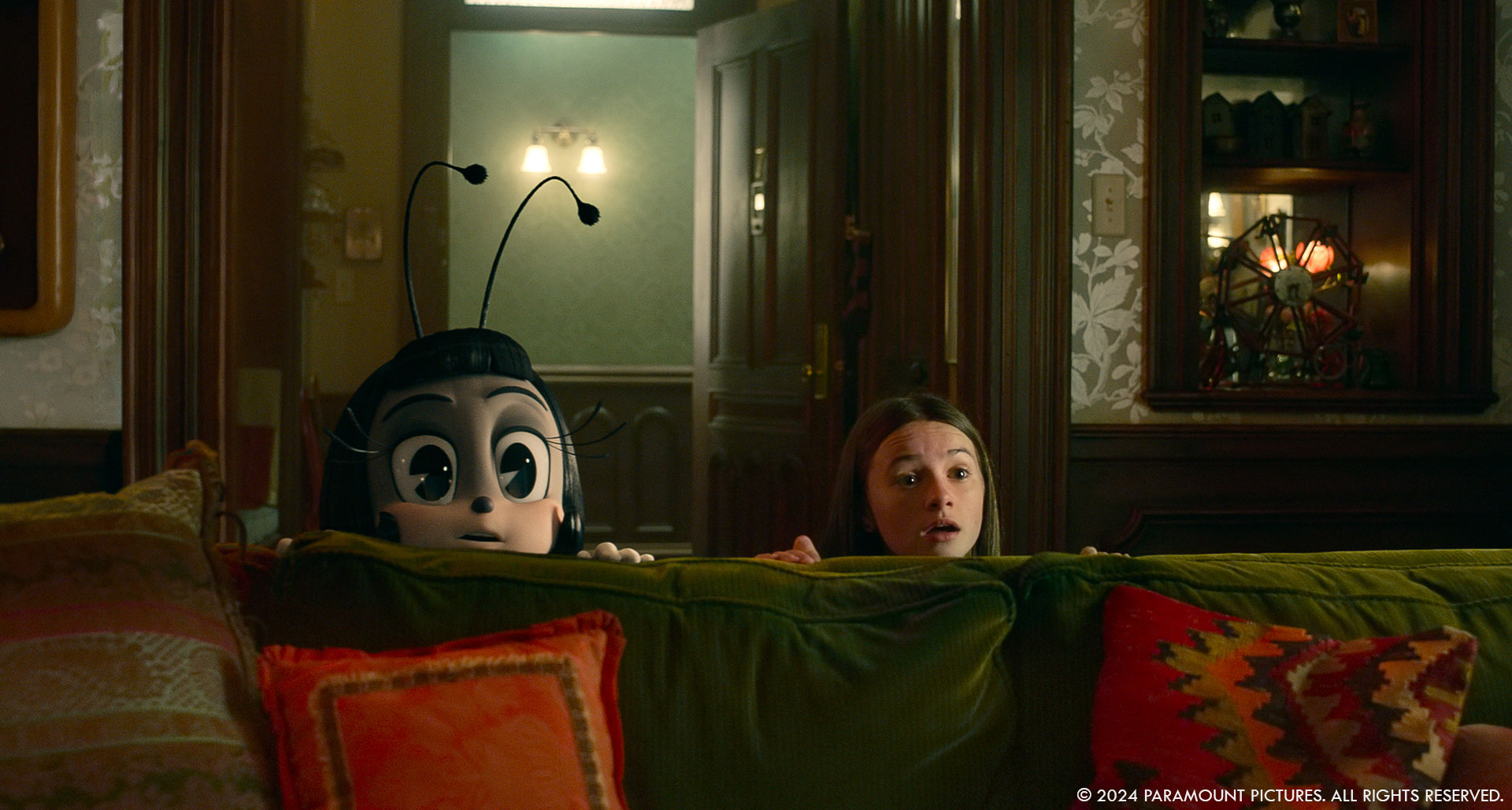
Were there any particular real-life animals or creatures that served as inspiration during the design phase?
Arslan Elver: We got inspired from dogs for Blue’s ears! I think that was the most obvious one. Mostly we were inspired by the voice actors, John’s performance briefs and our animators’ never ending reference shoots!
Chris Lawrence: I am happy you asked that. I have a great friend who is a VFX Supervisor in NYC and her cat Boris was used as extensive photographic reference for Octocat!
What role did technology play in bringing these creatures to life, particularly in terms of animation techniques?
Chris Lawrence: Technology was a part of our process in so many areas, and its very interesting to me that we have evolved to a place where we’re almost blase about its use and impact – we just take it for granted. We used an ‘augmented reality’ tool on an ipad called Farsight Go (part of a wider virtual production toolkit, developed by FPS, Framestore Pre-production Services) ‘Farsight’ during the scouts and prep period to help place characters and figure out the blocking on set. Doing postvis for the director’s cut, we had an automated rotoscoping pipeline. I’m not sure how it worked but to me it was basically magic: we would ingest the plates and a rough roto would show up! This was a workflow innovation that had really big implications for us as a production, because it meant we could do postvis on whole takes before there was even a rough cut.
We took a different approach to rigging some of the characters, such as Blue, using pure deformation rather than blendshapes. This was to give better articulation to areas like the mouth so they could do sweeping arcs rather than linear blends between shapes. John was very particular about lipsync, so this paid dividends towards the end of the process where we were able to finesse this motion. Blue also had cloth and hair simulations for collisions and creases, which all contributed to his tangible feel. Every pixel of the characters were rendered with Framestore’s proprietary renderer, Ffreak, which made the process seem effortless to me, though I’m certain there was an awful lot of hard work going on behind the scenes! And that’s just talking about one of the characters – each of them presented their own unique set of challenges, from Bubble’s shading to Cosmo’s jacket simulations and then the cumulative complexity of having everyone together in the theatre!
Arslan Elver: Rigging wise, particularly for Blue, we didn’t use our usual FACS based shape network but relied on a more deformer based system which was unique. That allowed animators to shape a lot more freely and do funny facial expressions, but also introduced a learning curve for exploring the character’s intricate facial features.
While I was on set, Chris had the idea of me connecting to my Framestore workstation. We took lidar scans of the set and I was grabbing frames from qtake on set from a particular take. I was able to quickly eyeball a few ‘key’ moments in Maya and pose our characters. This allowed me to give rigging feedback to our teams and allowed me to fully understand the environment/set. I was also able to show these ‘key’ poses to John, which helped inform (and inspire!) him and helped lay the foundation for the Framestore Pre-production Services (FPS) postvis process afterwards. All of this paid dividends on many fronts.


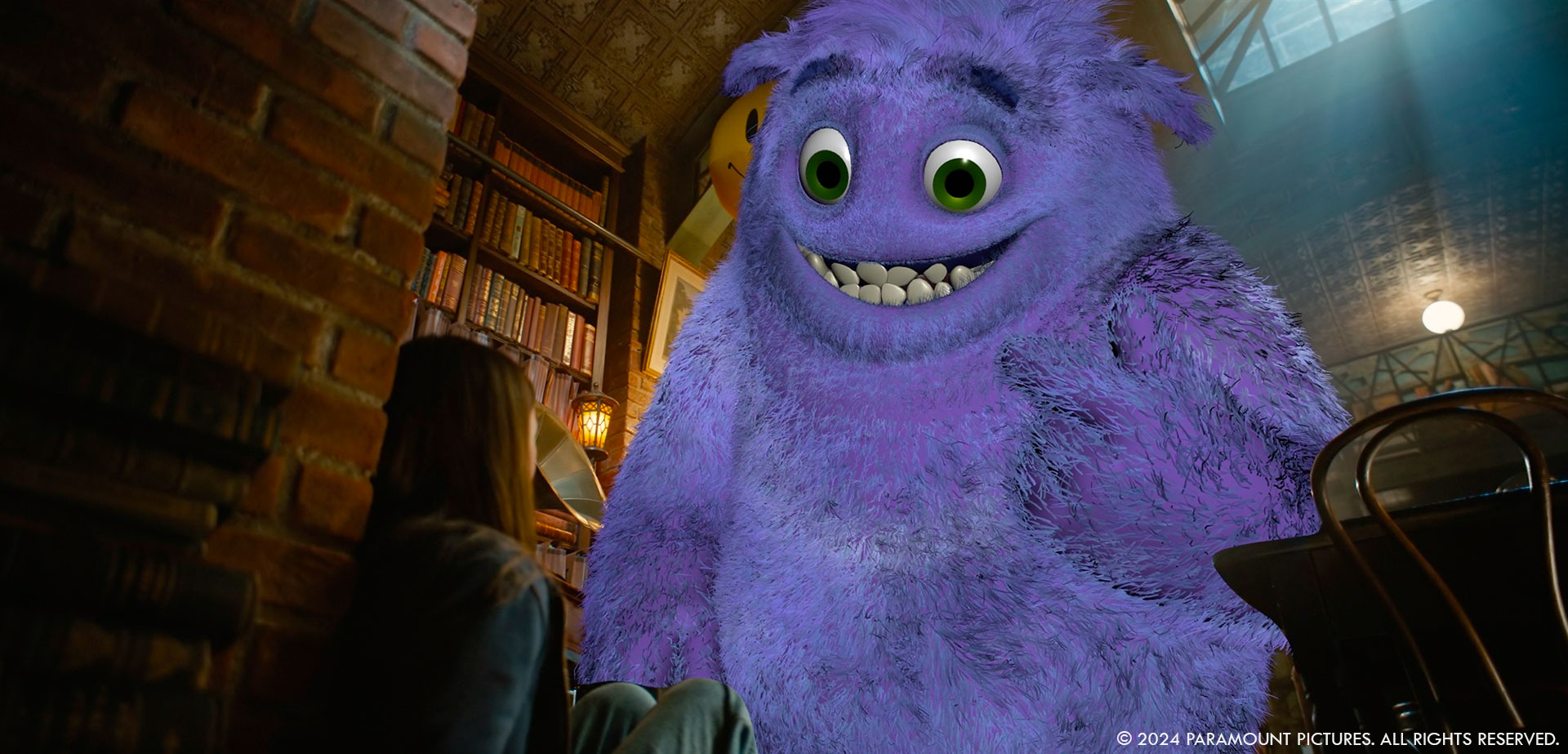
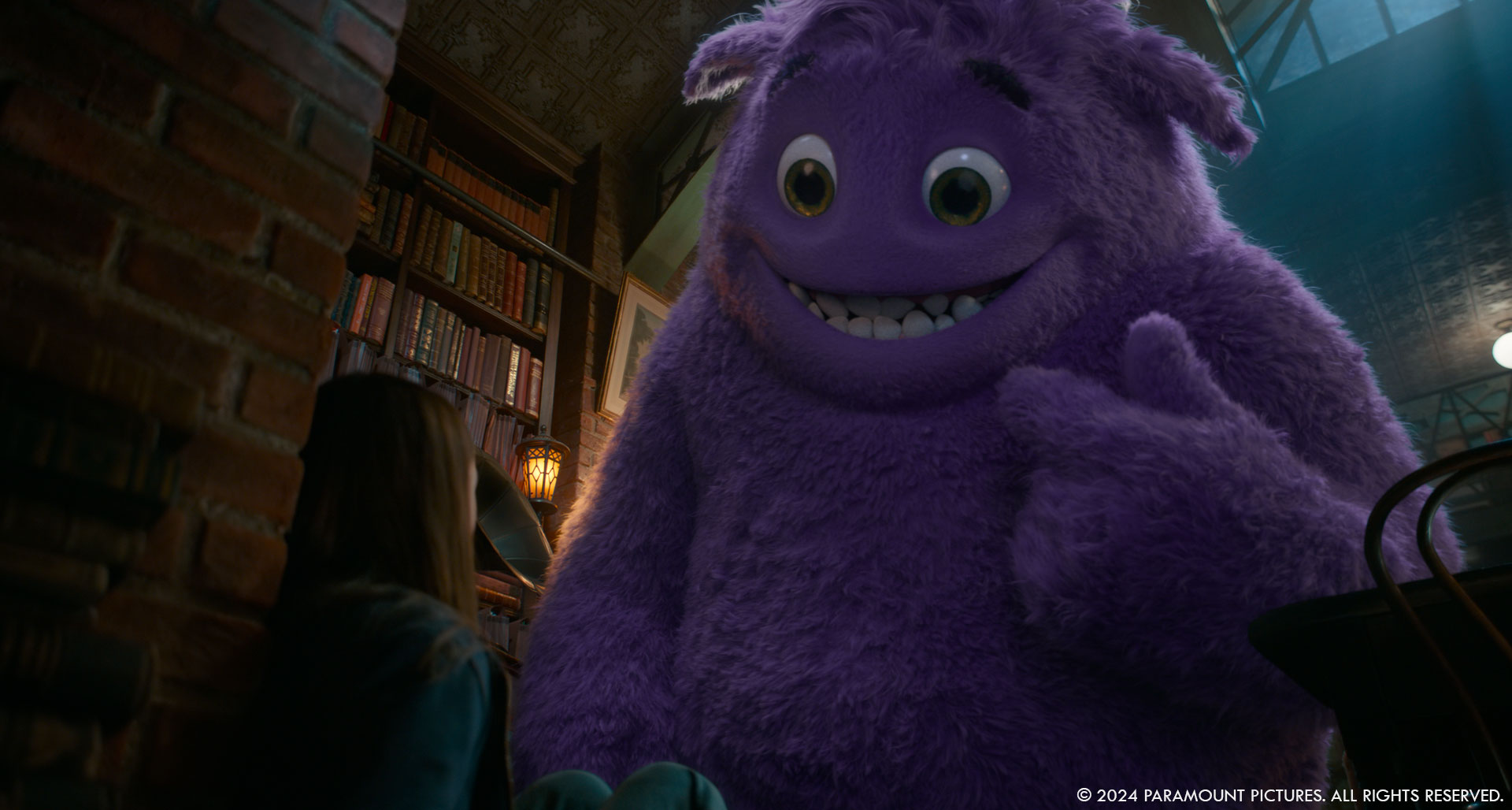
How did you balance realism with the need to create creatures that were both cute and endearing to the audience?
Chris Lawrence: Blossom is a great character to illustrate this. Early on we discussed making her more toon-like, in the vein of Roger Rabbit, but John wanted her completely ‘in our world’ rather than living on a ‘layer’ and feeling composited in. So the challenge became creating a completely appealing and authentic 3D model that clearly had that lineage of early 2D animation, but moved with all the appeal and attitude of Phoebe’s character. I think the Framestore team did a great job of lighting her, there’s a richness to a lot of the shots and really sets her in the scene. We had a late breaking realisation that making her slightly more reflective overall really helped add to this feeling, so some of the shots where the lighting was naturally flatter were updated with this change to make them richer.
Arslan Elver: Believability of performance is always absolutely key. Whether the character you’re animating is a bubble, an astronaut or an anthropomorphic dog it’s all about acting, which meanse even the slightest eye dart, head movement or hand gesture was key. I think I can easily say that, apart from Cosmo, we stayed quite true to the mechanics of the live-action world and always kept things natural in terms of performance. This allowed the audience to empathise with the character on screen, regardless of the form they took. ‘Appeal’ was a key word we talked about a lot with sups and leads. There were times that, say Blossom, might not be looking appealing from a particular angle. So it came down to the artistry of talented animators to make sure that even a slight head orientation allowed the character’s inherent appeal to shine. Similarly, it could be an opportunity to do something with Blue’s puppy-like ears for a specific reaction to communicate the necessary emotion while keeping the character’s appeal.
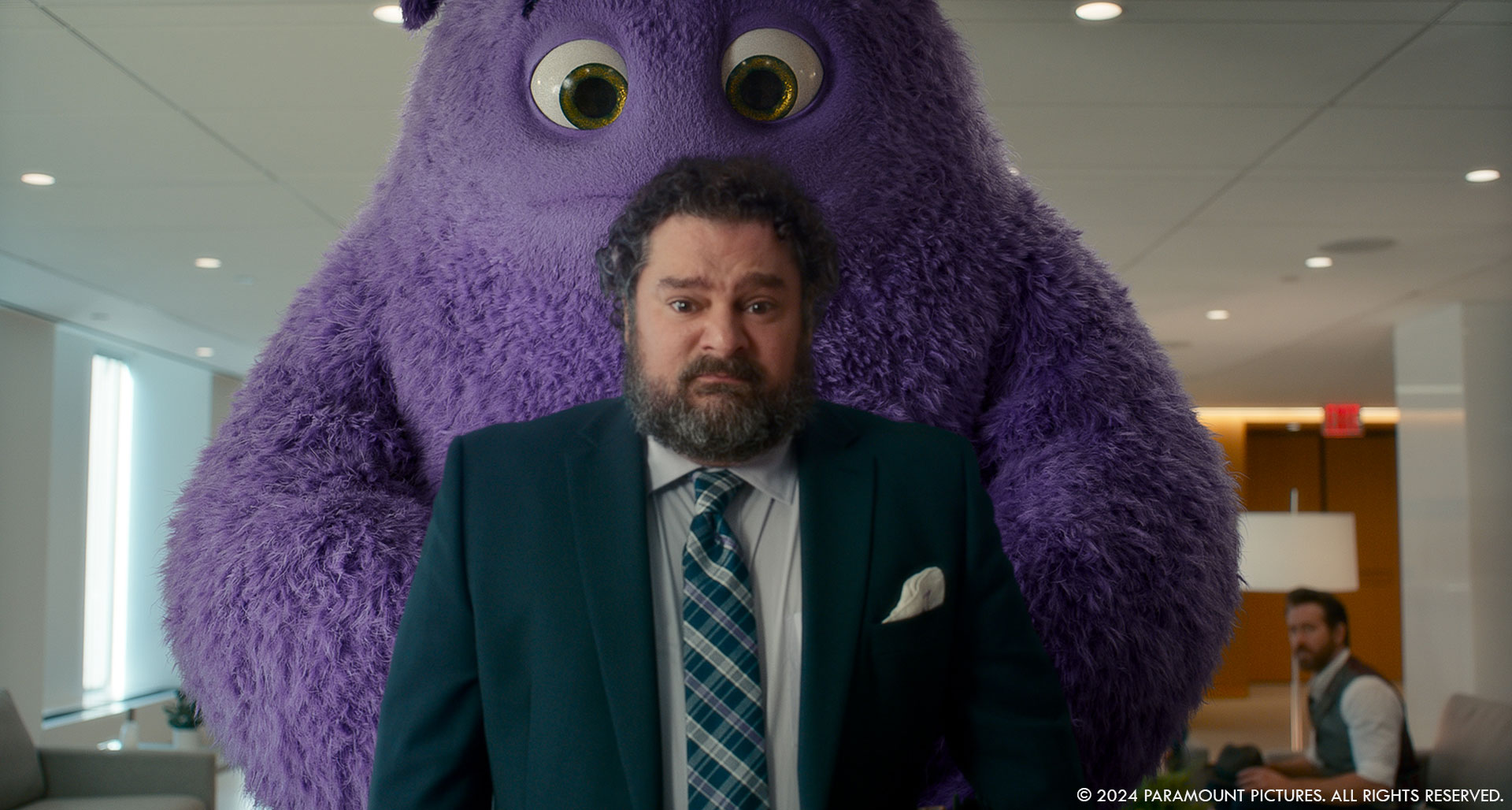
Did you encounter any unexpected surprises or breakthroughs during the development process of these creatures?
Arslan Elver: I’ve gotta be honest, one thing I was scared about was how to fit Blue into a shot but in the end it wasn’t an issue at all – he worked out perfectly. I was expecting Blossom’s facial structure and her expressions to be challenging given her 2D aesthetic. Adjustingour rig to react to particularly tricky angles was the big breakthrough there.
Chris Lawrence: My biggest surprise was when Blossom came together with all the elements: her performance, the look and feel of her model and costume and ‘living’ in the scene with the rest of the cast. At that moment that we were going to get away without having to pose and animate her very specifically towards camera in order to make her work as a character, and this was extremely liberating.
How did you ensure that the creatures fit seamlessly into the overall visual style and world of the film?
Chris Lawrence: Jess Gonchor was the production designer and he’d been involved with the characters from the outset. I think the world of the movie grew in a very deliberate way around the characters. Cal’s apartment was such an incredible set, an amazing space so rich with all these tiny details. We were very lucky to be shooting in NY, so the world outside was completely authentic. Janusz Kaminski was then able to elevate it with some pretty spectacular lighting choices to meet the magical realism we were bringing. Jenny Eagan did the same with costume and the whole thing came together in a very beautiful way. Jenny and I have worked together before and her team were particularly collaborative in helping us dress the IFs and always asking us the right questions to get to the heart of the characters. She challenged me in a great way once by saying ‘what does Blue smell like?’ – croissants apparently!


What were some of the key considerations when designing the movements and behaviors of these creatures to enhance their cuteness?
Arslan Elver: I’ve answered some of this in my previous replies, but each character’s physical shape tends to dictate the performance choices. That’s a given even for live-action acting, and I believe because we methodically analyse what we can do with each character’s particular body shape and physiology, it imbued their performance with a realism that allows audience to feel them as real characters.
In the case of Blue, he’s this naive but overly excited purple, huggable, mega cute character. When we first meet him he’s interacting with Cal and we wanted to convey the character sense of honesty. We used his ears to help sell particular emotions or reactions.
As a dancer, Blossom had to be lighter and more nimble. After analysing Phoebe’s Fleabag performances and John’s amazing direction of her for the voice recording session we had plenty to play with in terms of unique gestures and characteristics. I love how she was bickering with Cal in that early scene – this was something John encouraged us to push more without breaking her character.


Can you share any behind-the-scenes anecdotes or stories about the creation of these creatures?
Chris Lawrence: John invited the VFX team to pitch their own imaginary friends. This was a really fun bit of the process and resulted in quite a few of the characters we see on screen. My (then two-year-old) daughter loved bubbles at the time and I thought it would be funny to have a bubble who was anxious and afraid of popping. One of our character art directors pitched quite a few including ghost ‘King Andromedus the third’ and the knights, which were one of our few (mostly) in-camera IFs.
Can you discuss any specific scenes where visual effects were particularly challenging or innovative?
Chris Lawrence: We took an approach of having performers on set in place of the IFs for entire setups, which gave us loads of really challenging paint work throughout the movie. The goal was to help the interactions with the live action cast feel as real as possible, which I think worked out well. This was taken to an extreme in the Tina Turner dance section – we had 20 dancers on stage all interacting with Cailey and Ryan, all filmed on steadicam in a two minute long single take of the entire routine! It was basically impossible to get a matching clean plate to paint the dancers out with, especially as the poor guys in knight outfits were originally intended to be in-camera (in the end we replaced them with CG doubles for a few shots to help continuity to accommodate an edit change). Framestore’s team in Montreal did an amazing job of matching the lighting and building a CG stage to aid the paint outs. The good news was that the animation itself was a close match to Mandy Moore’s choreography, so although it was a lot of work it at least they could go off what the dancers were doing and re-interpret the motion for the IFs.
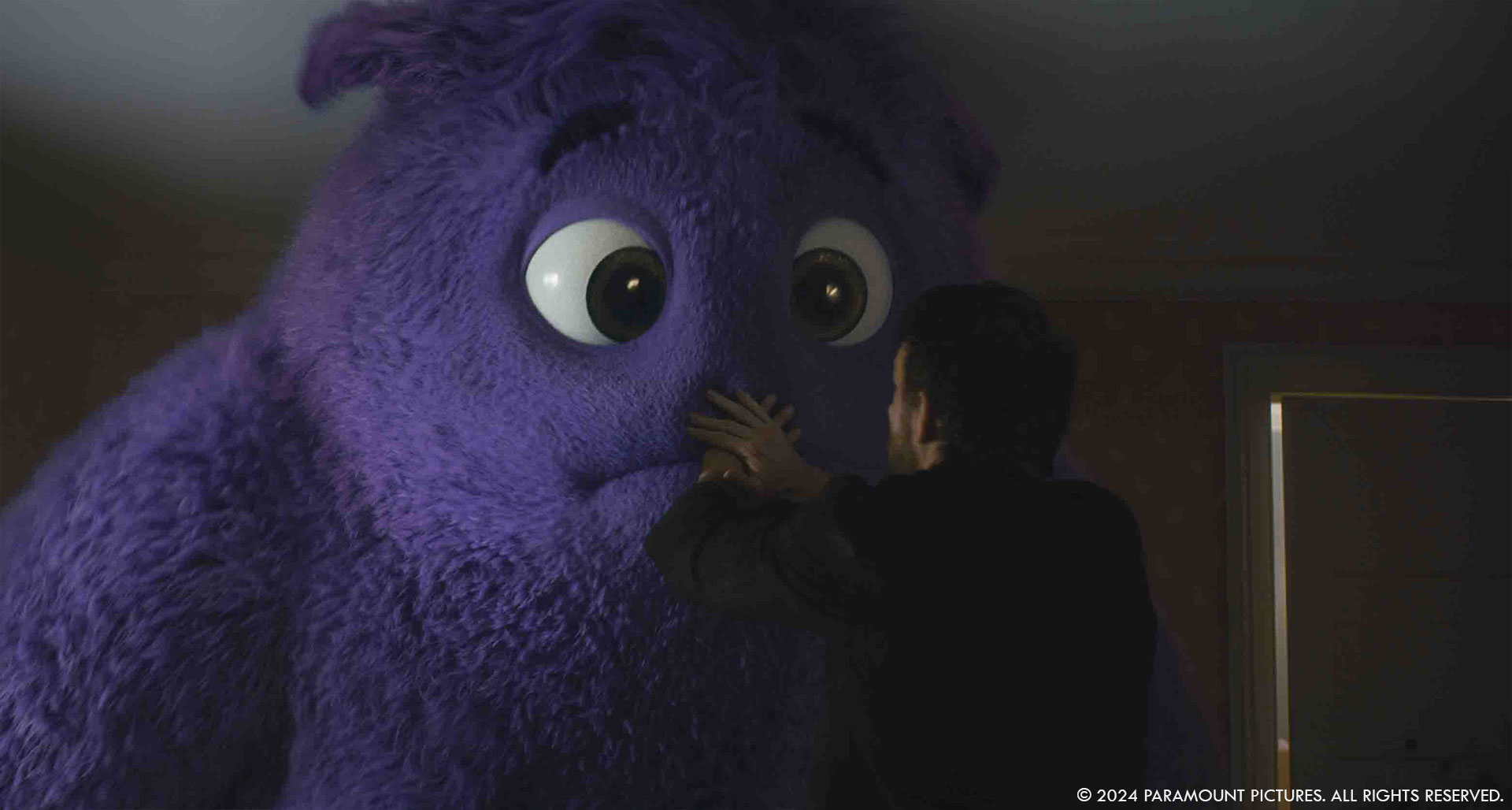
Looking back on the project, what aspects of the visual effects are you most proud of?
Arslan Elver: For me the sheer amount of unique character we helped the filmmakers to create to inhabit their world and act with the same depth of feeling you’d expect from live-action actor. Also, we don’t always find ourselves working on a original IP so it was pure joy to be able to bring something to life from thin air.
Chris Lawrence: It’s great to think that we brought all these new lovable characters to life. I was lucky to go and see it with my own kids who were enthralled by Blue and Blossom, it was definitely a highlight of the whole experience! Everyone worked hard to allow the animated performances to shine and I think Arslan and the whole team did a fantastic job.
Tricky question, what is your favorite shot or sequence?
Arslan Elver: Oof, that’s a tough one! Whichever scene i choose, people who worked on other scenes will be like, come on! I’d say either the Tina Turner dance number or thefirst time we meet Blue – he’s just so goofy and naive there. When I watched the movie for the first time after we wrapped, I couldn’t help but constantly giggle to his reactions.
Chris Lawrence: It would have to be the Tina Turner dance number – for the sheer invisible complexity of the VFX, and for Tina’s song which still sounds good even after hearing it SO many times!

How long have you worked on this show?
Chris Lawrence: I was on for 23 months.
A big thanks for your time.
WANT TO KNOW MORE?
Framestore: Dedicated page about IF on Framestore website.
© Vincent Frei – The Art of VFX – 2024






